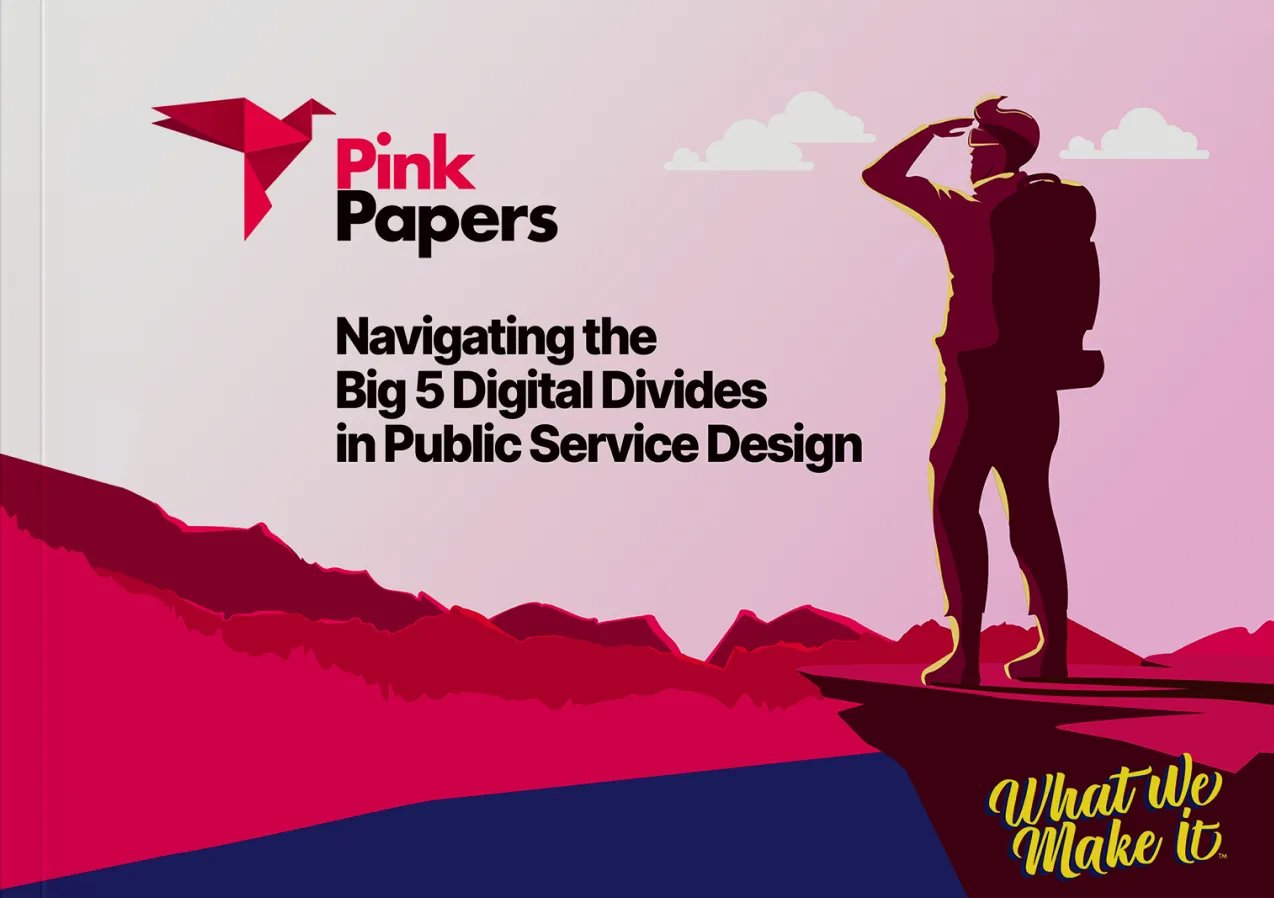Navigating the Big 5 Digital Divides in Public Service Design
Although 93% of Canadians identified themselves as Internet users in 2021, and governments, businesses and other organizations are forging ahead in the full transition to digital services, digital divisions among citizens remain persistent. At What We Make It, we are continually asking ourselves who could be left behind in our service design projects and what strategies can we implement to minimize the effects of those divides in our methods.
When we are talking about the digital divides, we are talking about 5 distinct dimensions of disparity in Public Service Design
Access
The unequal distribution of physical access to computers, smartphones, and high-speed internet. It can occur because of a user’s geography (rural or remote) and socioeconomic status (affordability).
Skills
Differences in digital literacy and proficiency in using digital technologies and the internet, including the ability to navigate online platforms, use digital tools, critically evaluate information, and engage in online communication.
Usage
Differences in the types of technology used (mobile vs. desktop) and the extent to which individuals or groups use digital technologies and the internet.
Content
Differences in the availability and variety of translated content, educational resources, and culturally relevant information. Limited access to diverse and inclusive digital content can further marginalize certain groups, hindering their ability to fully benefit from digital technologies.
Trust
The extent to which individuals or communities trust digital technologies and/or the government. These reasons can vary based on historical, socio-political, and cultural factors such as corruption, oppression, discrimination, inequitable treatment, a lack of representation and inclusion, and data collection which rationalizes all of these factors, and is applied for unethical purposes.



